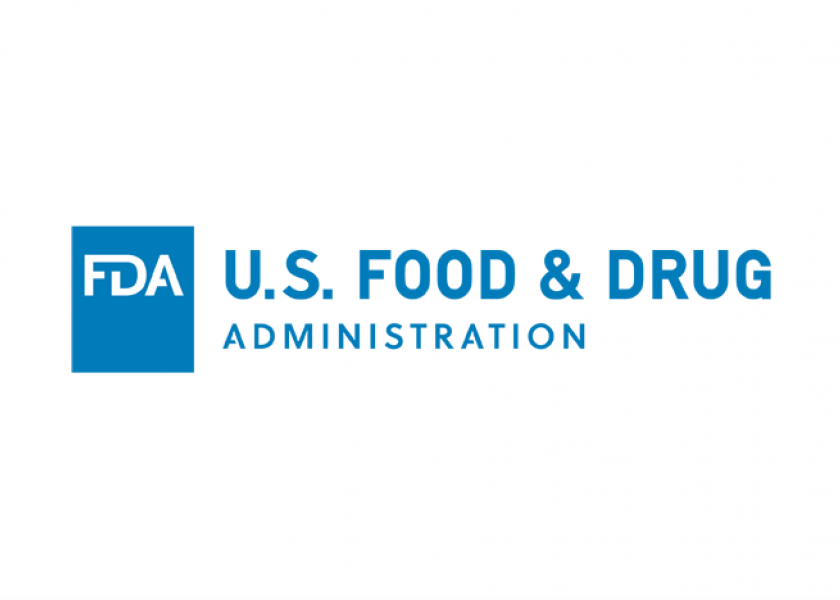FDA highlights consumer data on food safety perceptions of fresh produce and organic produce

The saying that the “consumer is always right” seems unlikely when it comes to food safety perceptions.
However, it is easier than ever to review Food and Drug Administration data on wide-ranging consumer attitudes about food and produce safety.
The FDA has released FSANS Explorer, a web-based tool that allows users to interact with the Food Safety and Nutrition Survey data. The tool is available at the FDA website.
The 76-page Food Safety and Nutrition Survey was released earlier this year from data collected from 4,400 consumers in October and November 2019, according to a news release.
Highlights of the survey include:
- Consumers think people are more likely to get a foodborne illness from food prepared at a restaurant than food prepared at home, the survey said. Few respondents (15%) thought it was “very common” for people to get food poisoning because of the way food is prepared at home, compared to 29% who thought it was “very common” to get food poisoning because of the way food is prepared in restaurants;
- Consumers are more concerned about raw chicken and raw beef than raw vegetables or fruit being contaminated, the survey said. More respondents thought that raw chicken (93%) and raw beef (66%) were “likely or highly likely” to have germs than raw vegetables (9%) or fruit (6%);
- Consumer awareness of germs varies depending on the type of germ, according to the survey. Awareness is high for Salmonella (97%) and E. coli (88%) but comparatively low for Campylobacter (7%) and Vibrio (4%);
- When asked how often they buy organically grown fruits or vegetables, 7% of consumer polled by FDA replied, “all of the time,” 15% said “most of the time” and 50% said “some of the time.” Twenty-five percent of consumers said “never” and 3% said “don’t know”;
- When asked if they think organically grown fruit and vegetables are more or less likely to have harmful germs than other fruits and vegetables, 11% of consumers said “more likely,” 28% said “less likely,” 47% said “about the same” and 13% said “don’t know”;
- When asked if they think organically grown fruit and vegetables are more or less likely to cause long-term health problems than other fruits and vegetables, 4% said “more likely,” 48% said “less likely,” 30% said “about the same” and 17% said “don’t know”;
- When asked if they think organically grown fruit and vegetables are better or worse for the environment than other fruits and vegetables, 57% said “better for the environment,” 2% said “worse for the environment,” 24% said “about the same” and 16% said “don’t know”;
- When asked if they think organically grown fruit and vegetables are more or less nutritious than other fruits and vegetables, 39% of consumers said, “more nutritious,” 2% said “less nutritious,” 48% said “about the same” and 11% said “don’t know”;
- When asked “how likely do you think it is that raw fruits contain bacteria or other germs that could make people sick,” 51% of consumers said, “not at all likely” and just 4% responded “very likely.”
- For raw vegetables, the same question was met with 46% of consumers who said, “not at all likely,” with 5% indicating “very likely”;
- When the same question asked about the likelihood of whole lettuce containing bacteria or other germs that could make people sick, just 6% of consumers said “not at all likely” while 23% said "very likely”;
- When asked about the likelihood that a bowl of cut up melon contain bacteria or other germs that could make people sick, 25% of consumers said, “not at all likely,” and 8% said “very likely”;
- Eighteen percent of consumers asked about bagged, pre-cut lettuce or pre-cut salads indicated it was “not at all likely” that those products contain bacteria or other germs that could make people sick, while 8% said it was “very likely.”
Users can use the online tool to find answers to their specific questions, according to the release.
FSANS Explorer users can:
- Explore the relationship between responses to survey questions and respondent demographic characteristics;
- Visualize responses to survey questions through tables and charts; and
- Perform statistical tests that measure the strength of response /respondent relationship.







